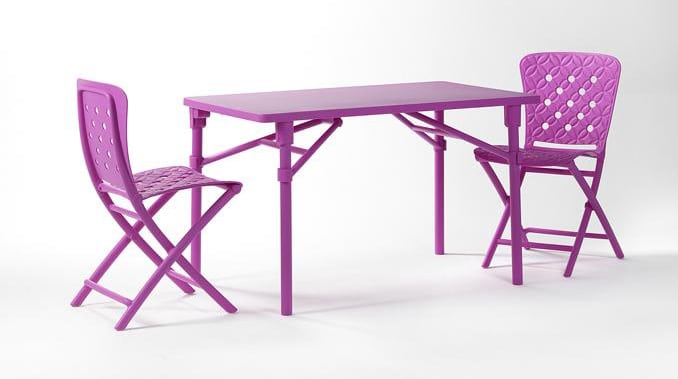Enhance Your Furniture Visuals with Professional Photo Editing Services

In the digital era, where online shopping has become the norm, captivating visuals play a crucial role in attracting potential customers. Furniture photo editing is a powerful technique that enables businesses in the furniture industry to enhance the visual appeal of their products, ultimately driving sales and customer engagement. This article explores the significance of furniture photo editing, its benefits, popular editing techniques, and how businesses can leverage this service to optimize their marketing efforts.
Table of Contents
- Introduction: The Power of Visuals in Furniture Marketing
- Understanding Furniture Photo Editing
- 2.1 Enhancing Lighting and Exposure
- 2.2 Adjusting Colors and Tones
- 2.3 Removing Imperfections and Blemishes
- 2.4 Background Removal and Replacement
- 2.5 Adding Realistic Shadows and Reflections
- 2.6 Creating 3D Visualizations
- Benefits of Furniture Photo Editing
- 3.1 Increased Product Appeal
- 3.2 Consistency and Branding
- 3.3 Cost-Effective Solution
- 3.4 Improved Customer Experience
- Choosing the Right Furniture Photo Editing Service
- 4.1 Quality and Expertise
- 4.2 Turnaround Time
- 4.3 Security and Confidentiality
- 4.4 Customer Support
- Best Practices for Furniture Photo Editing
- 5.1 Start with High-Quality Photographs
- 5.2 Maintain Realistic Representations
- 5.3 Consistency Across Product Catalogs
- 5.4 Optimize for Different Platforms
- Case Studies: Success Stories of Furniture Photo Editing
- 6.1 Furniture Retailer X: Increasing Conversion Rates with Enhanced Visuals
- 6.2 Furniture Manufacturer Y: Creating Consistent Brand Imagery
- The Future of Furniture Photo Editing
- Conclusion
- Frequently Asked Questions (FAQs)
- 9.1 Why is furniture photo editing important for e-commerce businesses?
- 9.2 Can furniture photo editing improve customer trust and satisfaction?
- 9.3 What are the key factors to consider when choosing a furniture photo editing service?
- 9.4 How can furniture photo editing help create a cohesive brand identity?
- 9.5 Are there any emerging trends or technologies in furniture photo editing?
Introduction: The Power of Visuals in Furniture Marketing
When it comes to selling furniture online, visuals can make or break a customer’s decision to purchase. In a highly competitive market, it is essential for businesses to present their furniture products in the most appealing and professional manner. This is where furniture photo editing comes into play. By leveraging various editing techniques, businesses can transform their product images into visually stunning representations that grab the attention of potential customers.
Understanding Furniture Photo Editing
Furniture photo editing involves a range of techniques that enhance and optimize product images to make them more visually appealing. Let’s explore some of the most common editing techniques used in furniture photo editing:
2.1 Enhancing Lighting and Exposure
Proper lighting is crucial to capture the true beauty and details of furniture. In furniture photo editing, experts adjust the lighting and exposure levels to highlight the product’s features and create a balanced composition. This technique ensures that the furniture appears vibrant and well-illuminated, attracting customers with its visual appeal.
2.2 Adjusting Colors and Tones
Color accuracy is vital in furniture marketing. Professionals use color correction techniques to ensure that the product images represent the furniture’s actual colors. By adjusting the color balance, saturation, and tones, the edited images showcase the furniture in its truest form, helping customers make informed purchase decisions.
2.3 Removing Imperfections and Blemishes
During the photoshoot, furniture can often have minor imperfections or blemishes that may distract customers. Furniture photo editing experts employ retouching techniques to remove such imperfections, ensuring that the final images are flawless and enticing.
2.4 Background Removal and Replacement
To create a clean and professional look, furniture photo editing involves removing the original background and replacing it with a more suitable one. This technique allows businesses to showcase their furniture against a neutral or customized backdrop, emphasizing the product itself.
2.5 Adding Realistic Shadows and Reflections
To enhance the realism of furniture images, professional editors add natural-looking shadows and reflections. These elements create depth and dimension, making the furniture appear more lifelike and enticing to potential buyers.
2.6 Creating 3D Visualizations
In some cases, businesses may require 3D visualizations of their furniture products. Furniture photo editing experts can create high-quality 3D renders, allowing customers to visualize the furniture from different angles and perspectives. This technique is particularly useful when showcasing customizable or yet-to-be-produced furniture pieces.
Benefits of Furniture Photo Editing
The utilization of furniture photo editing offers numerous benefits for businesses in the furniture industry. Let’s explore some of the key advantages:
3.1 Increased Product Appeal
By enhancing the visual appeal of furniture images, businesses can significantly increase customer engagement and conversion rates. Professionally edited images capture attention, allowing potential buyers to visualize the furniture in their homes, ultimately leading to higher sales.
3.2 Consistency and Branding
Consistency in product imagery is essential for building a strong brand identity. Furniture photo editing ensures that all product images maintain a consistent look and feel, aligning with the brand’s aesthetics and reinforcing brand recognition.
3.3 Cost-Effective Solution
Outsourcing furniture photo editing to professional service providers can be a cost-effective solution compared to hiring an in-house team or investing in expensive photography equipment. Businesses can save time and resources while still receiving high-quality edited images.
3.4 Improved Customer Experience
High-quality and visually appealing product images contribute to a positive customer experience. By providing customers with realistic representations of their furniture, businesses build trust and confidence, resulting in increased customer satisfaction and loyalty.
Choosing the Right Furniture Photo Editing Service
Selecting the right furniture photo editing service is crucial for achieving optimal results. Consider the following factors when choosing a service provider:
4.1 Quality and Expertise
Look for a service provider with a track record of delivering high-quality edited images. Check their portfolio and customer reviews to ensure they possess the necessary expertise in furniture photo editing.
4.2 Turnaround Time
Timely delivery is essential to meet marketing deadlines. Choose a service provider that offers a reasonable turnaround time without compromising on quality.
4.3 Security and Confidentiality
Furniture businesses often deal with sensitive product information. Ensure that the service provider has robust security measures in place to protect your data and maintain confidentiality.
4.4 Customer Support
Reliable customer support is valuable when working with a furniture photo editing service. Prompt communication and responsiveness to queries or concerns are essential for a smooth collaboration.
Best Practices for Furniture Photo Editing
To maximize the effectiveness of furniture photo editing, businesses should follow these best practices:
5.1 Start with High-Quality Photographs
The quality of the original photographs is crucial for achieving superior edited images. Ensure that the initial product images are captured professionally, with proper lighting and composition.
5.2 Maintain Realistic Representations
While enhancing the visuals, it is important to maintain a sense of realism. Avoid overediting that may misrepresent the product, leading to customer disappointment upon receipt.
5.3 Consistency Across Product Catalogs
Maintaining a consistent style and editing approach across the entire product catalog is essential. This ensures that customers have a seamless browsing experience and helps establish a recognizable brand identity.
5.4 Optimize for Different Platforms
Consider the various platforms where the furniture images will be displayed. Optimize the edited images to fit the specific requirements of each platform, ensuring the best possible presentation and user experience.
Case Studies: Success Stories of Furniture Photo Editing
Let’s take a look at two case studies that demonstrate the effectiveness of furniture photo editing:
6.1 Furniture Retailer X: Increasing Conversion Rates with Enhanced Visuals
Furniture Retailer X was struggling with low conversion rates on their e-commerce website. By partnering with a professional furniture photo editing service, they transformed their product images, improving the overall visual appeal. The enhanced visuals resulted in a significant increase in customer engagement and conversion rates, ultimately boosting their online sales.
6.2 Furniture Manufacturer Y: Creating Consistent Brand Imagery
Furniture Manufacturer Y wanted to establish a strong brand identity across their marketing materials. By implementing consistent furniture photo editing techniques, they achieved a cohesive and visually appealing product catalog. This consistency in brand imagery helped them differentiate themselves in the market and attract a loyal customer base.
The Future of Furniture Photo Editing
As technology continues to advance, the future of furniture photo editing holds exciting possibilities. With the rise of virtual and augmented reality, customers may soon be able to virtually place furniture in their homes before making a purchase. Additionally, the integration of artificial intelligence and machine learning may further automate and enhance the furniture photo editing process, providing even more efficient and accurate results.
Conclusion
In the digital age, where visual appeal holds immense power, furniture photo editing has become a valuable tool for businesses in the furniture industry. By utilizing professional editing techniques, businesses can transform their product images into visually stunning representations that attract and engage customers. With increased product appeal, brand consistency, cost-effectiveness, and improved customer experience, furniture photo editing is undoubtedly a game-changer in the competitive world of online furniture marketing.
Frequently Asked Questions (FAQs)
1 Why is furniture photo editing important for e-commerce businesses?
Furniture photo editing is crucial for e-commerce businesses as it enhances the visual appeal of their products, ultimately leading to increased customer engagement and sales. Professionally edited images create a positive impression and help customers make informed purchase decisions.
2 Can furniture photo editing improve customer trust and satisfaction?
Yes, furniture photo editing plays a significant role in improving customer trust and satisfaction. High-quality and visually appealing product images build trust, as customers can accurately visualize the furniture they are considering to purchase, leading to higher satisfaction levels.
3 What are the key factors to consider when choosing a furniture photo editing service?
When selecting a furniture photo editing service, consider factors such as the provider’s quality and expertise, turnaround time, security measures, and customer support. It is crucial to choose a service provider that aligns with your specific business requirements and goals.
4 How can furniture photo editing help create a cohesive brand identity?
By maintaining a consistent style and editing approach across the entire product catalog, furniture photo editing helps businesses create a cohesive brand identity. Consistency in visual representations reinforces brand recognition and strengthens the overall brand image.
5 Are there any emerging trends or technologies in furniture photo editing?
Yes, emerging trends and technologies in furniture photo editing include virtual and augmented reality, which allow customers to visualize furniture in their homes virtually. Additionally, the integration of artificial intelligence and machine learning may further automate and enhance the editing process, offering more efficient and accurate results.

